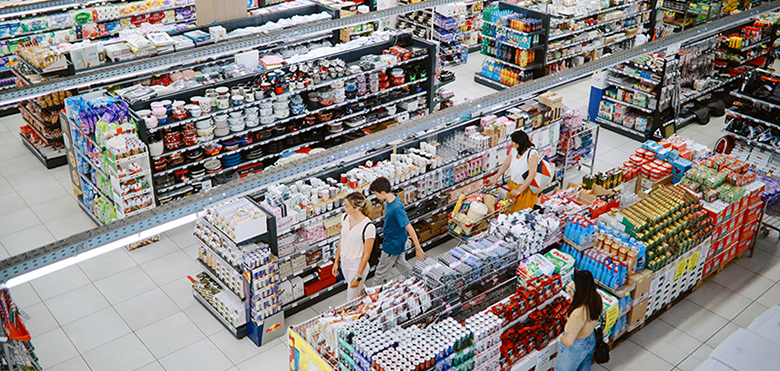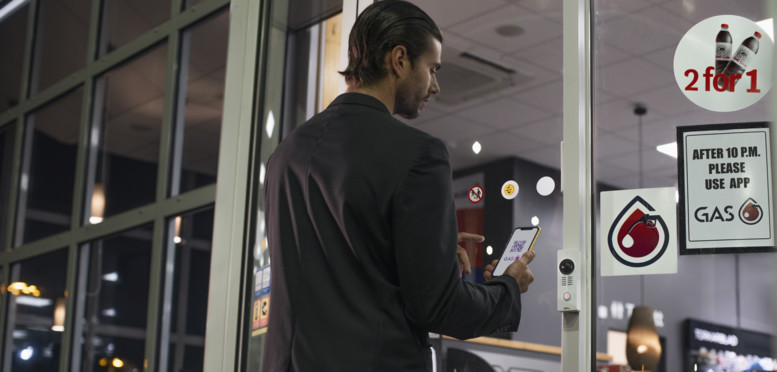How data-driven insights can optimize the in-store experience
Data is increasingly at the heart of every business. The ability to collect, analyze and derive actionable insights from multiple sources of data can have a direct impact on the bottom line. This is most evident when we consider the shopping experience and putting those insights into practice can be the difference between winning a customer or losing them to the competition.
Providing an exemplary customer experience both online and offline is critical. While digital visitors to your website can be closely analyzed – and influenced through a tailored experience from site entry to purchase – until more recently it has been difficult for you to access the same level of insight from data in your store. Network video cameras equipped with analytical software now enable you to deliver a convenient and personalized experience for customers using data insights to transform and optimize the in-store environment.
Understanding what the customer wants and doesn’t want:
Revising your in-store experience must start with a deep understanding of the customer desires and frustrations which detract from their buying journey. According to a recent study by PwC, lack of stock, rising prices and stagnant queues topped the list of customer concerns when they step foot in store. Nearly seven out of ten (68%) reported that rising prices had the greatest impact on their in-store shopping experience, followed by products being out of stock (42%) and long queues (39%).
Fortunately, addressing these concerns is within your control and can be mitigated by a range of activity involving staff management processes and technology. Ensuring adequate staffing levels during peak hours can have many positive benefits. This will enable employees to provide personalized assistance, and prevent long queues from forming while maintaining a relaxed shopping environment.
This can make a real difference as the research also found that nearly a third of respondents (27%) put access to knowledgeable sales associates highest in their ranking of in-store shopping experience (while 50% find it appealing). This is an area where you can use technology to support your staff, such as by implementing additional self-checkout points to provide customers with an alternative way to complete their purchases. This will help to ease in-store congestion, while allowing current cashiers to upskill and offer more informed advice on your products and services.
Stocking levels are another point of frustration which can result in customer loss. Instead of manually checking stock at standardized times of the day, you can utilize analytics to understand when stock levels on shelves are dipping – especially for popular items – so that they can be reordered in time.
Finally, economic turmoil and the associated price increases will no doubt impact your customer’s purchasing decisions. Most will want to secure a good deal and you can use audio and displays to raise awareness of personalized promotions, add value and help customers save money.
Although physical stores have historically been mainly analogue from a shopper’s perspective, the modern customer now expects automated solutions when they visit your premises. This aligns well with your need for new software and hardware integrations to gain insights.
Network cameras plus retail analytics equals insight
Similar to the web data available to online retailers, analytics software integrated into your network cameras gives you the behavioral insights needed to uplevel your store environment to increase customer satisfaction, retention and rates of sales conversion.
Let’s look at six key areas where in-store video analytics can be used:
- Visitors and in-store ‘stickiness’
Firstly, knowing how many people visit your store is fundamental and people counting analytics gives an accurate view of physical ‘traffic’. This will provide average visit times, which is an important indicator of how good the overall experience is.
- Not only ‘how many?’, but ‘who and where?’
Beyond footfall, it’s important to understand the behavior of people within the store environment. For example, if a group is present, is everyone shopping? Where are they spending the most time?
- Allocating staff to peak times and locations
With staffing being one of your most significant costs, managing levels throughout the day is central to your overall profitability. However, too few staff can be seriously detrimental to customer satisfaction – shoppers won’t wait long for assistance and tend not to return after suffering a poor experience.
Video analytics can provide occupancy rates throughout the day, helping you to plan staffing levels, and highlight when customers are leaving the store after a long wait for service. You can also measure time spent in various zones and point to locations where staff assistance can help, or where interactive displays will assist in answering customer questions.
- Audio’s role in a tailored customer experience and sales conversion
While network cameras with analytics provides you with valuable insight, the addition of network audio allows for more dynamic tailoring. Speakers placed at strategic points within the store environment can play music, share information about specific products and promotions and allow for real-time announcements to assist customers and move them along the journey to purchase. You can combine these messages with digital screens to increase the impact and even set them up to be automatically triggered by events, such as motion detection.
- Analytics support queue management
Although we know that a poor experience can cause your customers to leave the store, there are other aspects of service delivery that can lead to dissatisfaction. We can all relate to a long, slow-moving queue at the checkout which – if perhaps we only have a few items – can cause a real-world basket abandonment and lost sales. Queue monitoring analytics is a simple way to deliver alerts that allow you to open new checkouts, alleviating pressure and allowing purchases to be completed.
- Aggregated insights across your store network
Finally, for larger retailers, a key advantage of video analytics is the ability to aggregate and compare data across your regional, national or international store network. Different types of data, including footfall, demographic information, heatmaps, and dwell time can be gathered from your stores and fed into a centralized third-party business intelligence (BI) dashboard. In this way, these data sets can be correlated to generate insightful and actionable information to inform your business strategy and ultimately maximize profits.
One point to note is that although analytics can yield a variety of actionable insights, it’s critical for you to protect your customer’s privacy and remain GDPR compliant. As such, data should be collected anonymously, utilizing masking technology to protect identities. Failure to do so can have a negative legal, financial and reputational impact which could affect your bottom line.
People and technology come together for the ultimate convenience
The smart use of technology can help improve and deliver a competitive in-store experience, often by ensuring that customer needs and frustrations are addressed in a thoughtful way. For example, self-checkout or mobile checkout technology can support the customer journey, integrating cameras with analytics in this area to alert your staff for assistance if needed.
By understanding and prioritizing known customer pain points directly, you will ultimately provide a consistent, good quality experience in your stores, creating brand advocates who will return time and time again.
Click here to find out more about Axis’ solutions for retail



